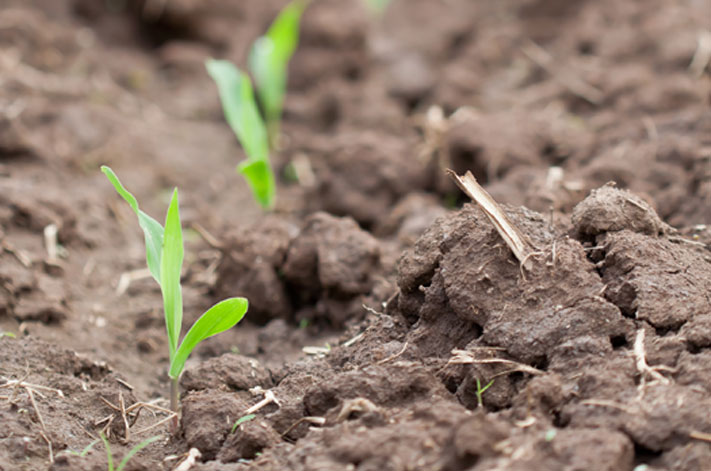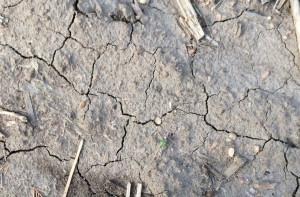 Tuesday, March 31st, farmers and market analysts focused their attention upon the USDA’s Prospective Plantings report for 2015, and while the numbers were within close distance of pre-report estimates, the amounts of prospective planting acres for corn and soybeans were farther apart than many had expected. Overall, the report numbers were bearish for new-crop corn, bullish for new-crop soybeans, and neutral for new-crop wheat.
Tuesday, March 31st, farmers and market analysts focused their attention upon the USDA’s Prospective Plantings report for 2015, and while the numbers were within close distance of pre-report estimates, the amounts of prospective planting acres for corn and soybeans were farther apart than many had expected. Overall, the report numbers were bearish for new-crop corn, bullish for new-crop soybeans, and neutral for new-crop wheat.
Getting right to the numbers, the report estimated that farmers in the US will plant 89.2 million acres of corn during the upcoming planting season, a number that is down 2 percent from last year. Farmers will plant 84.6 million acres of soybeans, up 1 percent from one year ago. Overall, soybean acres will be higher in 21 of 31 major states for the crop.
As for the other portion of the report, Grain Stocks estimates showed 11 percent more corn supplies in the US versus that of one year ago, with 4.38 billion bushels stored. This is a 13 percent increase from one year ago. Consequently, corn stocks took a tumble yesterday, ending 18 cents lower by the end of the day.
Conversely, the report showed soybean stocks on hand to be at 1.333 billion bushels, slightly below the pre-report estimate of 1.341 billion bushels. As a result, soybeans ended up 3.75 cents yesterday.
For wheat, the report found quarterly wheat stocks at 1.124 billion bushels, also below the average pre-report estimate of 1.143 billion bushels. As for wheat acres, there were few surprises, with a report estimate of 13 million acres, compared to pre-report estimate of 13.24 million acres.
So, while the report wasn’t too far off expectations, farmers are still looking at lower corn prices for the foreseeable future. According to market analyst and broker Don Roose, “Tuesday’s grain stocks and numbers for both corn and soybeans, and their implications for overall acreage and stocks heading into the remainder of 2015, will be what takes charge of prices beyond planting season.” Next, the market’s attention will be focused on the weather, and at this point, it’s looking more favorable for the Midwest, and delayed in the mid-South and Delta.
“Right now, the outlook is for mild, below-normal temperatures in much of the Midwest, at least to start summer. That will benefit early crop development, though areas that are already on the dry side could stay that way, with rainfall prospects expected to be at or below normal through much of the summer in the Plains and Midwest,” says MDA Weather Services senior ag meteorologist Kyle Tapley.
Are you concerned about falling market prices, and wonder if your land is being put to its best use? Please feel free to contact a UFARM representative. We are glad to help.
Sources Consulted: Caldwell, Jeff. “Grain Stocks, Acreage Reports Send Corn Lower, Soybeans Higher.” Agriculture.com. Meredith Agrimedia. 31 Mar. 2015. Web. 01 Apr. 2015. Caldwell, Jeff. “Three Things to Watch This Morning, Wednesday, April 1st.” Agriculture.com. Meredith Agrimedia. 01 Apr. 2015. Web. 01 Apr. 2015. Newsom, Darin. “A Cliffhanger of Sorts.” DTN/The Progressive Farmer. DTN. 31 Mar. 2015. Web. 01 Apr. 2015.

 It may seem early to think about spring planting, and the Groundhog may have said 6 more weeks of winter, but that hasn’t stopped farmers from doing just that. Aside from starting to think about getting planting equipment out and geared up for April, farmers and climatologists know that spring weather patterns begin to emerge in January and February, and snow and weather events now can have a large impact on the conditions that they’ll meet in the fields. So, how are spring planting conditions looking for 2015?
It may seem early to think about spring planting, and the Groundhog may have said 6 more weeks of winter, but that hasn’t stopped farmers from doing just that. Aside from starting to think about getting planting equipment out and geared up for April, farmers and climatologists know that spring weather patterns begin to emerge in January and February, and snow and weather events now can have a large impact on the conditions that they’ll meet in the fields. So, how are spring planting conditions looking for 2015? It’s planting season across the Midwest, and Nebraska farmers are eager to get their crops into the ground. A colder than normal winter with low levels of snowfall has left soil moisture at a premium, and while recent rainfall is a welcome remedy to lower than optimal soil moisture, the rain and cool temperatures are also doing their best to reign in planting across the area.
It’s planting season across the Midwest, and Nebraska farmers are eager to get their crops into the ground. A colder than normal winter with low levels of snowfall has left soil moisture at a premium, and while recent rainfall is a welcome remedy to lower than optimal soil moisture, the rain and cool temperatures are also doing their best to reign in planting across the area.